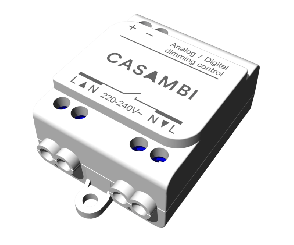
Smart Home System
Control your smart home lighting with our easy-to-use control system that gives you full control over your lighting. Discover our range and experience the future of lighting technology.

































Smart home systems for lighting offer a variety of features and capabilities to enhance the lighting experience in your home. These systems use wireless technology and are able to work with a variety of lamps and lighting systems.
What types of systems are there?
There are several types of smart home systems for lighting, including smart LED lights, smart switches and dimmers, and systems that can be controlled with voice commands or mobile apps. These systems offer a variety of features, such as color changing, programmable schedules, and smart brightness control.
Smart home systems for lighting are often used in homes, offices and stores, where they are used for specific applications such as ambient lighting or to improve security and energy efficiency. They can also be used in public spaces and industrial facilities.
However, it is important to note that smart home systems for lighting are not suitable for every type of lighting. In some cases, it can be difficult to integrate older or incompatible lamps and lighting systems with these systems. Also, in some cases, smart LED bulbs or systems can be more expensive than traditional bulbs and switches.
Advantages and disadvantages of smart home systems for lighting.
The advantages of smart home systems for lighting include improved usability and control over the lighting system, increased energy efficiency, and better security through automated lighting functions. Another benefit is that they are compatible with various voice control and automation features to enhance the overall smart home experience.
The disadvantages of smart home systems for lighting are that they may not be compatible with older bulbs or lighting systems, and in some cases they can be more expensive. It's also important to make sure the system is safe and reliable to avoid potential safety hazards.
When using smart home systems for lighting, keep the following in mind.
When using smart home systems for lighting, there are a few things you should keep in mind to ensure optimal use and avoid potential problems.
First, it's important to make sure that the smart home system you choose is compatible with your existing lighting devices and systems. Not all smart LED lights or systems will work with all types of lights or switches. If you have existing lighting equipment and systems, it's important to check compatibility before investing in a smart home system.
It is also important to consider the security and privacy features of the smart home system. Make sure the system has sufficient security measures to prevent unauthorized access to your network or personal information. Many smart home systems use Wi-Fi or Bluetooth connections, which can pose potential security risks if not adequately secured.
If you use a smart home system for lighting, you may also benefit from additional features such as remote control or automation. However, it is important to ensure that the system works reliably and that it is regularly maintained to avoid malfunctions and problems.
 Deutsch
Deutsch
 English
English
 Nederlands
Nederlands
 Français
Français
 Contacts
Contacts
 +49(0)2822-91487477
+49(0)2822-91487477











 Andorra
Andorra
 Belgien
Belgien
 Bosnien und Herzegowina
Bosnien und Herzegowina
 Bulgarien
Bulgarien
 Dänemark
Dänemark
 Estland
Estland
 Finnland
Finnland
 Frankreich
Frankreich
 Griechenland
Griechenland
 Irland
Irland
 Island
Island
 Italien
Italien
 Kroatien
Kroatien
 Lettland
Lettland
 Liechtenstein
Liechtenstein
 Litauen
Litauen
 Luxemburg
Luxemburg
 Malta
Malta
 Monaco
Monaco
 Niederlande
Niederlande
 Norwegen
Norwegen
 Österreich
Österreich
 Polen
Polen
 Portugal
Portugal
 Rumänien
Rumänien
 San Marino
San Marino
 Schweden
Schweden
 Schweiz
Schweiz
 Serbien
Serbien
 Slowakei
Slowakei
 Slowenien
Slowenien
 Spanien
Spanien
 Tschechische Republik
Tschechische Republik
 Ungarn
Ungarn
 Vereinigtes Königreich
Vereinigtes Königreich
 Zypern
Zypern








.jpg)













